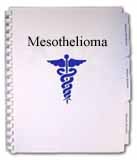|
Mesothelioma and Lung Cancer News - Return to Menu
Department for Work And Pensions (National)
UK:CHANGES TO THE SCHEDULE OF PRESCRIBED DISEASES - ASBESTOS-RELATED DISEASES
/noticias.info/ Margaret Hodge, Minister for Employment and Welfare Reform today laid before Parliament the report of the Industrial Injuries Advisory Council (IIAC) on asbestos-related diseases.
Accepting all the report recommendations she said that the necessary regulations will be brought forward as soon as possible.
Asbestos-related diseases includes conditions such as asbestosis, mesothelioma (a cancer affecting the lining of the lung cavity), lung cancer and pleural thickening (thickening of the lining of the lung cavity).
The main report recommendations are that:
* Prescribed Disease D8 (Asbestos-related lung cancer) is extended to include lung cancer where no asbestosis is present but where there is evidence of substantial occupational exposure.
* Reference to pleural thickening is removed from the terms of prescription for Prescribed Disease D8.
* Prescribed Disease D8 is paid at 100% from the outset (mirroring the current situation with mesothelioma) and claims are exempt from the 90 days waiting period.
* The diagnosis of diffuse pleural thickening for Prescribed Disease D9 is modified to make diagnosis easier for medical advisers.
* The prescription and occupational coverage for Prescribed Diseases D1, Pneumoconiosis and D3 Mesothelioma, remain unchanged.
* All mesothelioma sufferers should be made aware of the provisions of the IIDB Scheme for Prescribed Disease D3 (Mesothelioma).
Note to editors:
1. No one currently getting benefit for a prescribed disease which is being changed will lose benefit directly as a result of the change.
2. The Industrial Injuries Advisory Council is an independent body which advises the Secretary of State for Work and Pensions on the Industrial Injuries scheme which provides weekly compensation for people injured at work because of industrial accidents and prescribed diseases. The Council's Reports are made to the Secretary of State who lays them before Parliament. Regulations leading to changes are then submitted to the Council for their consideration before being laid before Parliament.
3. The full text of the Council's Report will appear on the Council's web site https://www.iiac.org.uk
4. Role of the Industrial Injuries Advisory Council
The Industrial Injuries Advisory Council is an independent statutory body set up in 1946 to advise the Secretary of State for Social Security on matters relating to the Industrial Injuries scheme. The majority of the Council's time is spent considering whether the list of prescribed diseases for which benefit may be paid should be enlarged or amended.
5. The Council's Research Working Group meets quarterly to review new scientific evidence about diseases which they are monitoring and other diseases where new evidence of a possible occupational link requires consideration.
6. Composition of the Council:
The Council currently has 16 members including the Chairman. It consists of medical specialists, epidemiologists, and legal experts, and, by statute, an equal number of employers' and employees' representatives (currently 4 each). Appointments are made to the Council by the Secretary of State following an open selection procedure under the guidance of the Office of the Commissioner for Public Appointments.
7. The Council's remit:
The Council has three roles:
- to advise on the prescription of industrial diseases
- to advise on Regulations under the Social Security Administration Act 1992 and the Contributions and Benefits Act 1992
- to advise on the Industrial Injuries Benefit scheme itself.
8. Legal requirements for prescription of diseases
The Social Security Contributions and Benefits Act 1992 states that the Secretary of State may prescribe a disease where he is satisfied that the disease:
a. ought to be treated, having regard to its causes and incidence and any other relevant considerations, as a risk of the occupation and not as a risk common to all persons; and
b. is such that, in the absence of special circumstances, the attribution of particular cases to the nature of the employment can be established or presumed with reasonable certainty.
9. In other words, a disease may only be prescribed if there is a recognised risk to workers in an occupation, and the link between disease and occupation can be established or reasonably presumed in individual cases. The Council looks for a workable definition of the disease and a practical way in which demonstrate in the individual case that the disease can be attributed to occupational exposure with reasonable confidence. There are two ways in which a disease can be attributed to occupation with reasonable confidence - clinical features or epidemiological evidence of a doubling of risk. Clinical features of a disease may allow attribution to occupation in some cases, e.g. an employee's dermatitis may improve when they are away from work. In the case of doubling of risk, the Council looks for epidemiological evidence that the disease is twice as likely to occur in that occupation compared to the general population. The Council makes decisions based on robust evidence, typically from different sources and with a sound scientific basis.
Public enquiries 020 7712 2171
Textphone 020 7238 0788
Website https://www.dwp.gov.uk
Industrial Injuries Advisory Council
Sixth Floor
The Adelphi
1 -11 John Adam Street
London WC2N 6HT
|

































